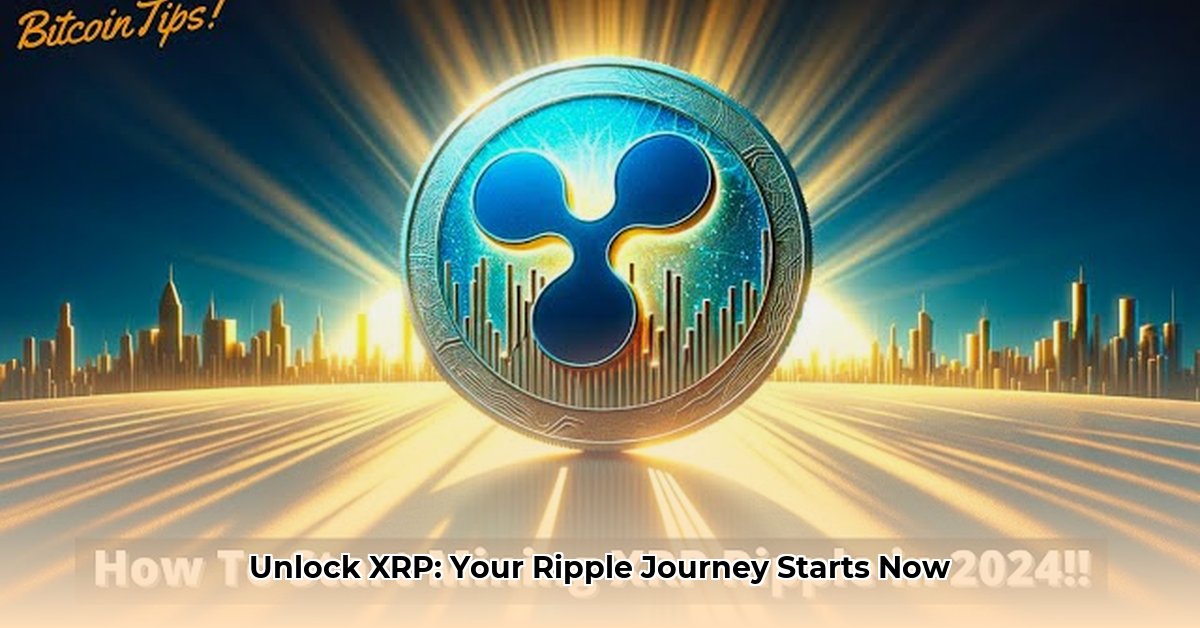
Can I Mine Ripple? Understanding XRP Acquisition
Many wonder, "Can I mine XRP?" The answer is no. Unlike Bitcoin, XRP wasn't created through mining. All XRP already exists; it's not generated through computational processes. This guide details how to acquire XRP in 2024.
Your Journey to XRP Ownership: A Multi-Path Approach
Several methods exist for acquiring XRP, each presenting unique benefits and drawbacks.
1. Buying XRP on Exchanges: The Easiest Route
This is the simplest method. Reputable cryptocurrency exchanges like Coinbase, Kraken, and Binance enable XRP purchases using fiat currency (USD, EUR, etc.) or other cryptocurrencies.
- Step 1: Account Creation and Verification: Create an account and verify your identity.
- Step 2: Funding Your Account: Deposit funds via bank transfer, debit/credit card, or other cryptocurrencies.
- Step 3: Placing Your Order: Specify the amount and price of XRP you wish to buy.
- Step 4: Secure Storage: Transfer your XRP to a secure digital wallet after purchase. Leaving XRP on the exchange is risky.
Risk Assessment: Low risk, moderate reward. Market volatility remains a factor. Transaction fees apply.
2. Liquid Mining: A Riskier, Potentially Rewarding Path
Liquid mining involves providing liquidity to decentralized exchanges (DEXs). You earn fees from trading activity. This is more advanced and carries higher risk.
- Step 1: Research and DEX Selection: Carefully research and choose a reputable DEX.
- Step 2: Providing Liquidity: Deposit pairs of cryptocurrencies (often including XRP) to the DEX's liquidity pool.
- Step 3: Earning Rewards: Earn trading fees based on your liquidity contribution.
- Step 4: Monitoring and Rebalancing: Regularly monitor and adjust your liquidity position to maximize returns and mitigate risks.
Risk Assessment: High risk, high potential reward. Impermanent loss (value fluctuations) is a significant risk. Requires technical understanding.
3. Indirect Acquisition: Mining Other Cryptos and Converting
Mine other cryptocurrencies (e.g., Ethereum) and convert them to XRP on an exchange. This requires technical expertise, specialized equipment, and significant energy consumption. Profitability depends on market conditions and efficiency.
Risk Assessment: Medium to High risk, high potential reward (potentially). Requires significant technical skill and investment in hardware and energy.
4. Faucets and Referral Programs: The Drip-Feed Approach
These platforms offer minuscule amounts of XRP for completing tasks. This is generally inefficient and unreliable for substantial XRP accumulation. Beware of scams.
Risk Assessment: Very low risk, very low reward. Time-consuming and often not worth the effort. High risk of encountering scams.
Weighing the Risks: A Comparative Overview
Each method presents different risks and rewards:
| Method | Risk Level | Potential Reward | Time Commitment | Technical Expertise |
|---|---|---|---|---|
| Exchanges | Low | Moderate | Low | Low |
| Liquid Mining | High | High | Medium | Medium |
| Altcoin Mining | Medium/High | High (potentially) | High | High |
| Faucets/Referrals | Very Low | Very Low | Low | Low |
Navigating the Regulatory Landscape
XRP's legal status varies by jurisdiction. Stay informed about relevant laws and regulations in your region. Consult a legal professional if needed.
Choosing Your Acquisition Strategy
Your ideal method depends on your risk tolerance, resources, and technical understanding. Start with exchanges if you're new to crypto; explore more advanced options like liquid mining with experience.
Final Thoughts: Understanding the XRP Landscape
You cannot mine XRP traditionally. However, various methods exist to acquire it. Remember, cryptocurrency markets are volatile. Conduct thorough research and invest only what you can afford to lose. This information is for educational purposes and not financial advice.